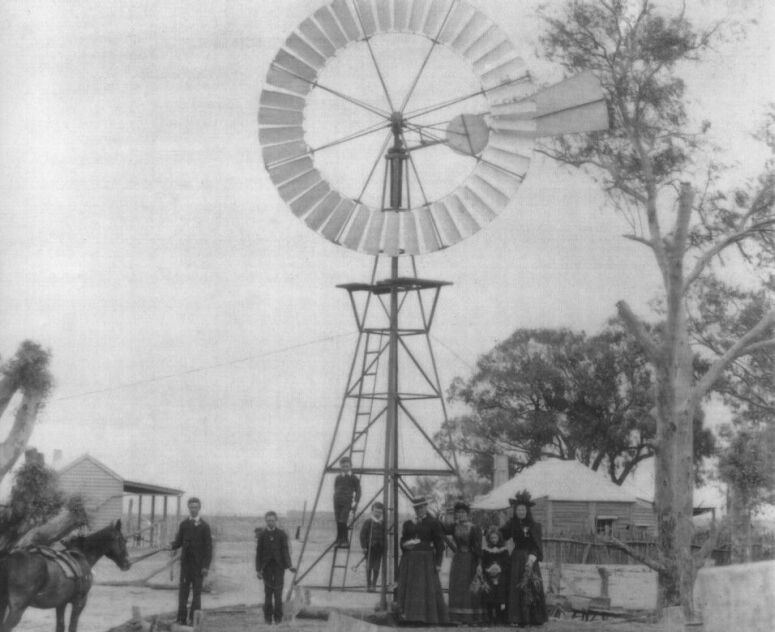The Prowse Windmill

Photographed in 2005 by Theo Cooke.
James Prowse was a windmill manufacturer of Beeac, Victoria, who, sometime between November 1899 and January 4th 1900, took over both the Lang Street premises and the business of carpenter, blacksmith and windmill maker, Robert BROWN. Robert BROWN operated his business from the west end of Lang Street, Beeac. James Prowse operated from here in his early days of business, but later built brick premises at the Main Street corner of Lang St.


Docket images courtesy of Craig Pink
All known PROWSE windmills were open crank direct action. Sizes varied from small single crank with four spoked wheel of five feet diameter, to the largest of the double open crank models that had eight spoked wheels in excess of ten feet in diameter. A small three legged tower model was also available, this was a cheaper version and differed slightly in the castings to the four leg tower models. Cheaper again, they could be supplied just as a black iron tower or galvanized at extra cost. The black iron models were painted grey with the castings painted red. Several special features of the Prowse Windmill assist in their identification, the main ones being the piece of pipe as a balance weight on one of the wheel spokes, and the distinct shape of the tail. Numerous models survive in the local area, with a small number still in working condition in 2007.
The first type of PROWSE windmill employed a strongly made cast head frame and mast pipe unit and was available in at least two sizes. A crankshaft, with grease cups either side and another on the pump rod, provided a single pump stroke choice. The hub was a two disc design. The inner one was a casting for pipe spokes, which grub screwed into it, and the smaller outer disc held brace rods, fitted through holes in the face of the casting. A flat sheet tail vane on a pipe tail spar furled to the left of the head. The wheel was all metal and individual blades were riveted to flat iron braces that fitted at each end to the inner and outer wind wheel rings.
The second type of PROWSE windmill may have been a larger mill that used a circular side vane. It used a straight shaft held by a clamped nose bearing.

Historic image of a direct action, bent crank Prowse windmill at the old Glenburnie Station, about 30km east of Hay, NSW. Glenburnie Station dates back to the 1870's. The photograph dates back to circa 1901 and shows members of the Neill family around the windmill.
L-R. William, George, Robert, James, Mrs Mary Jane Neill, Martha, Mary-Jane & Lily-Anne.
In 2009 the remains of some of the buildings are still there and are part of Wilga Station. The few rusted remains of the windmill have been collected by a local windmill enthusiast.
Back to gallery